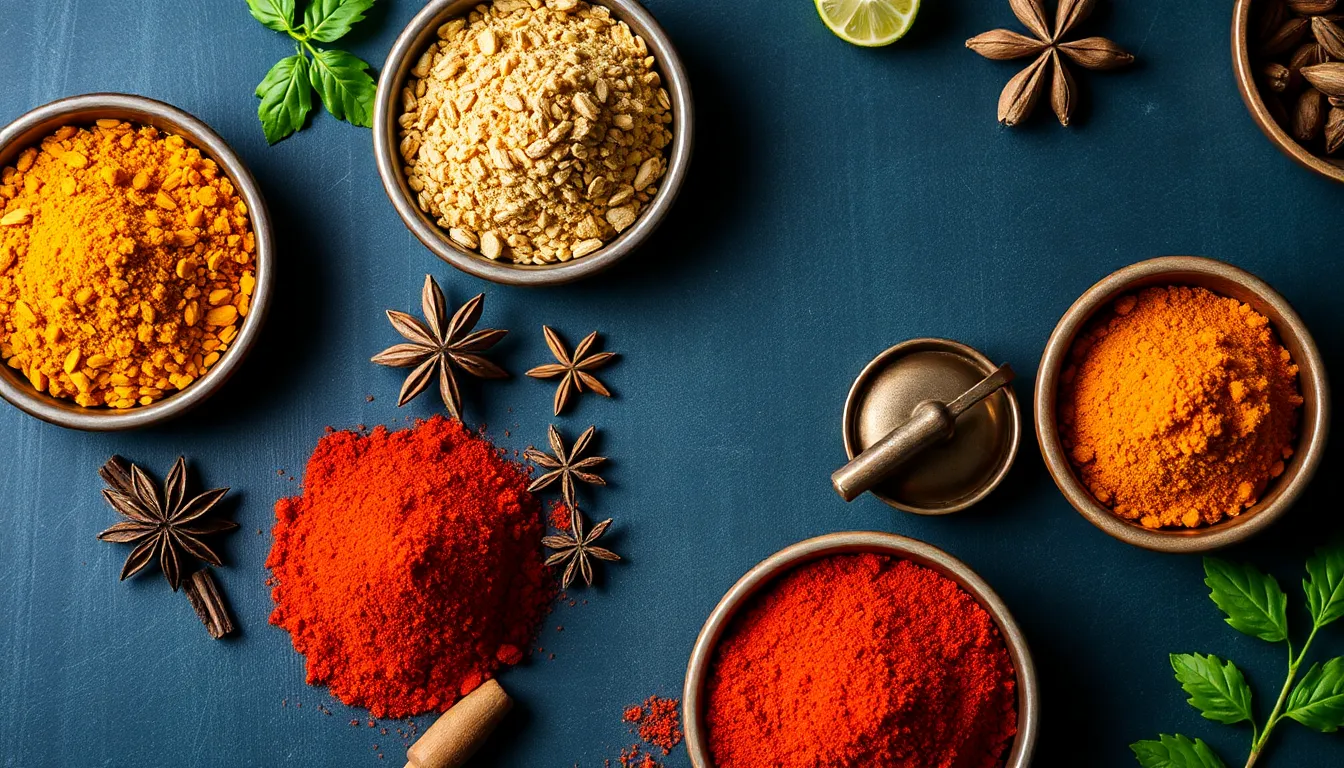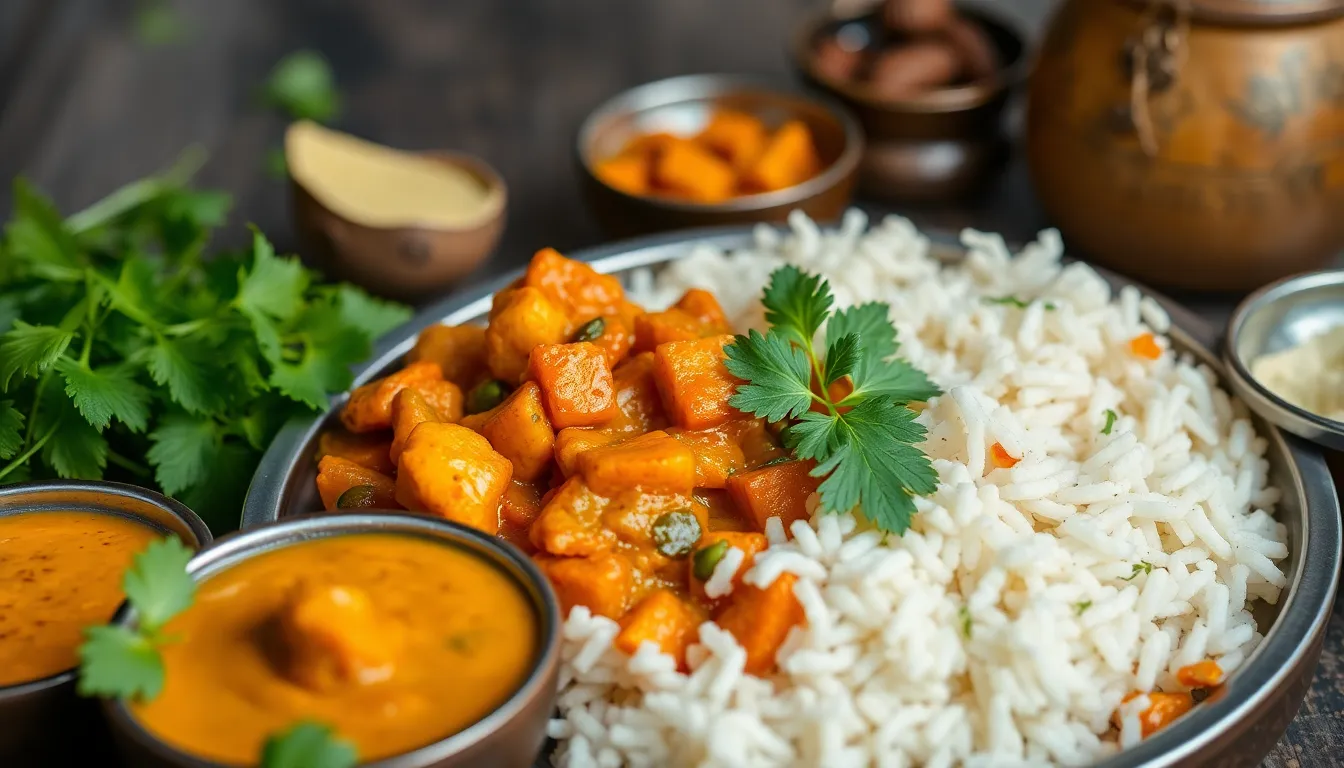Unlock the Secrets of Authentic Indian Spices: A Beginner’s Guide
Introduction
Indian cuisine is known for its vibrant flavors, aromatic herbs, and a complex interplay of spices that create unforgettable dishes. The essence of Indian cooking lies in its spices, which not only enhance the taste but also add depth and character to every meal. For beginners, understanding the role of these spices is crucial in mastering authentic Indian dishes.
This guide aims to educate you about the diverse world of Indian spices, helping you embark on a culinary adventure that will elevate your cooking skills and bring the spirit of India into your kitchen.
The Spice Spectrum: Understanding Indian Spices
What Are Indian Spices?
Indian spices are a variety of aromatic substances derived from plants that are incorporated into dishes during the cooking process. They can come from seeds, roots, bark, or fruits and are indispensable in achieving the bold flavors characteristic of Indian cuisine.
Types of Spices: A Colorful Palette
Indian spices can be categorized into several types, each contributing unique flavors and aromas to dishes:
- Whole Spices: Spices used in their natural form, such as cumin seeds or cardamom pods.
- Ground Spices: Spices that have been pulverized into powder, like turmeric or coriander powder.
- Spice Blends: Mixtures of various spices, such as garam masala or curry powder, designed to create harmonious flavors.
Common Indian Spices and Their Characteristics
| Spice | Flavor Profile | Common Uses | Health Benefits |
|---|---|---|---|
| Cumin | Earthy, nutty | Curries, rice | Aids digestion |
| Turmeric | Warm, bitter | Marinades, soups | Anti-inflammatory |
| Cardamom | Sweet, spicy | Desserts, chai | Antioxidant properties |
| Coriander | Citrusy, floral | Salsas, curries | Digestive aid |
| Mustard Seeds | Pungent, spicy | Pickles, tempering | Rich in omega-3s |
The Essential Spice Toolbox: Must-Have Spices for Beginners
Stocking Your Spice Rack: The Basics
As you embark on your journey to explore Indian cooking, it’s essential to have a well-stocked spice rack. Here’s a list of must-have spices to kickstart your collection:
- Cumin Seeds
- Turmeric Powder
- Ground Coriander
- Whole Cloves
- Cardamom Pods
- Mustard Seeds
- Chili Powder
- Garam Masala
- Fenugreek Leaves
- Cinnamon Sticks
Where to Find Authentic Spices
Sourcing the right spices can greatly influence the authenticity of your dishes. Here are some tips for finding authentic Indian spices:
- Local Indian Grocery Stores: Often have a wide variety of spices at reasonable prices.
- Farmers’ Markets: Check for fresh spices grown in your area.
- Online Retailers: Websites like Amazon or specialty spice shops often stock hard-to-find spices.
- Ethnic Food Aisles: Many supermarkets have sections dedicated to international ingredients.
Spice It Up: Techniques for Using Spices Effectively
Toasting Spices: Unlocking Flavor Potential
Toasting whole spices is a simple technique that can significantly enhance their flavor. Follow these steps to toast spices effectively:
- Heat a dry skillet over medium heat.
- Add the whole spices to the skillet.
- Toast them, stirring frequently, until they become fragrant (about 2-3 minutes).
- Remove from heat and let them cool before grinding if necessary.
Creating Spice Blends: The Art of Masalas
Masalas are essential in Indian cooking. Here are two popular masalas and how to make them:
Garam Masala:
- 1 tablespoon cumin seeds
- 1 tablespoon coriander seeds
- 1 teaspoon black peppercorns
- 1 teaspoon cardamom pods
- 1 stick of cinnamon
- 1 teaspoon cloves
- Toast and grind into a fine powder.
Chai Masala:
- 1 tablespoon ground ginger
- 1 teaspoon ground cinnamon
- 1 teaspoon ground cardamom
- 1 teaspoon fennel seeds
- 1 teaspoon black pepper
- Mix all spices and store in an airtight container.
Cooking with Spices: Simple Recipes to Get Started
Beginner-Friendly Dishes Featuring Spices
Recipe 1: Classic Chana Masala
Ingredients:
- 2 cups canned chickpeas, drained
- 1 large onion, chopped
- 2 tomatoes, chopped
- 2 tablespoons oil
- 1 tablespoon cumin seeds
- 1 tablespoon garam masala
- 1 teaspoon turmeric powder
- 1 teaspoon chili powder
- Salt to taste
- Fresh coriander for garnish
Instructions:
- Heat oil in a pan, add cumin seeds and let them splutter.
- Add onions and sauté until golden brown.
- Add tomatoes and cook until soft.
- Stir in turmeric, chili powder, and garam masala.
- Add chickpeas and mix well; cook for 10 minutes.
- Garnish with fresh coriander before serving.
Recipe 2: Fragrant Vegetable Biryani
Ingredients:
- 1 cup basmati rice
- 2 cups mixed vegetables (carrots, peas, beans)
- 1 onion, sliced
- 2 tablespoons biryani masala
- 2 tablespoons oil
- 1 teaspoon cumin seeds
- Salt to taste
- Fresh mint leaves for garnish
Instructions:
- Rinse basmati rice under cold water until the water runs clear.
- In a pot, heat oil and add cumin seeds.
- Add onions and sauté until golden brown.
- Stir in mixed vegetables and biryani masala; cook for 5 minutes.
- Add the rinsed rice, salt, and 2 cups of water; bring to a boil.
- Reduce heat, cover, and simmer until rice is cooked (about 15 minutes).
- Fluff the rice and garnish with mint leaves before serving.
Spice Safety: Storage and Shelf Life
Keeping Your Spices Fresh
Proper storage is key to maintaining the potency and flavor of your spices. Follow these best practices:
- Use Airtight Containers: Store spices in glass or plastic containers with tight-fitting lids.
- Cool, Dark Place: Keep spices away from heat and light to prolong their shelf life.
- Label and Date: Always label your spices with the name and date of purchase.
Knowing When to Toss
Spices don’t last forever. Here are signs that indicate it might be time to discard your spices:
- Loss of aroma or flavor
- Change in color or texture
- Presence of mold or insects
Cultural Significance of Spices in India
Spices and Traditions: A Culinary Journey
In India, spices are not just ingredients; they hold cultural significance tied to various festivals and rituals. For instance, certain spices are used in ceremonial dishes during weddings, while others are prepared during religious festivals, embodying the essence of celebration and tradition.
Regional Variations: Spices Across India
The diversity of India is reflected in its spices. Each region boasts its unique spice palette:
- North India: Known for rich, creamy dishes using spices like garam masala and cumin.
- South India: Uses curry leaves and mustard seeds, often in lentil-based dishes.
- West India: Famous for its use of kokum and a variety of spicy pickles.
- East India: Often incorporates mustard and nigella seeds in their cooking.




